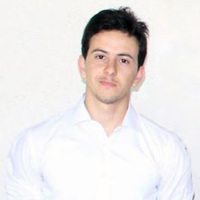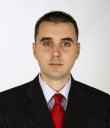
The defense will take place on Friday 16th December at 10 AM in the est amphi of the Humanities building, Insa-Lyon, Villeurbanne.
Title
Resilient IoT-based Monitoring System for the Nigerian Oil and Gas Industry
Abstract
Pipeline failures in crude oil transportation occur due to ageing infrastructure, third-party interferences, equipment defects and naturally occurring failures. Consequently, hydrocarbons are released into the environment resulting in environmental pollution, ecological degradation, and unprecedented loss of lives and revenue. Hence, multiple leakage detection and monitoring systems (LDMS) are employed to mitigate such failures. More recently, these LDMS include Wireless Sensor Networks (WSN) and Internet of Things (IoT)-based systems. While they are proven more efficient than other LDMS, many challenges exist in their adoption for pipeline monitoring. These include fault tolerance, energy consumption, accuracy in leakage detection and localisation, and high false alarms, to cite a few.
Therefore, our work seeks to address some of these challenges in implementing IoT-based systems for crude oil pipelines in a resilient end-to-end manner. Specifically, we consider the aspect of accurate leakage detection and localisation by introducing a unique node placement strategy based on fluid propagation for sensitive and multi-sized leakage detection. We also propose a new distributed leakage detection technique (HyDiLLEch) in the WSN layer. It is based on a fusion of existing leakage detection techniques such as the negative pressure wave method, gradient-based method, and pressure point analysis. With HyDiLLEch, we efficiently eliminate single points of failure.
Furthermore, we implement fault-tolerant data and service management in the fog layer utilising the Nigerian National Petroleum Corporation (NNPC) pipeline network as a use case. The problem is modelled as a regionalised data-driven game against nature on the NNPC pipelines. Our proposed regionalised solution (R-MDP) using reinforcement learning optimises accuracy and fault tolerance while minimising energy consumption.
Overall, our system guarantees resiliency to failures and efficiency in terms of detection and localisation accuracy and energy consumption.
Jury
- Stolf, Patricia, Professeur des Universités, Université de Toulouse, Rapporteure
- Guidec, Frédéric, Professeur des Universités, Université Bretagne Sud, Rapporteur
- Menaud, Jean-Marc, Professeur des Universités, IMT-Atlantique, Examinateur
- Caron, Eddy, Maître de Conférences, ENS Lyon, Examinateur
- Takruri-Rizk, Haifa, Professeur des Universités, University of Salford, Examinatrice
- Silva, Bhagya Nathali, Senior Lecturer, University of SriJayawardenepura, Examinatrice
- Le Mouël, Frédéric, Professeur des Universités, INSA Lyon, Directeur de thèse
- Stouls, Nicolas, Maître de Conférences, INSA Lyon, Co-Directeur de thèse
- Yusuf, Kabir, Docteur en gestion des ressources environnementales, PTDF/SAPZ, Invité











